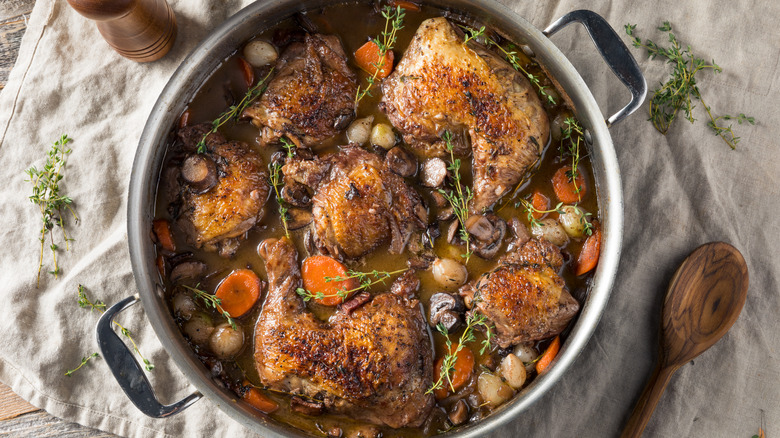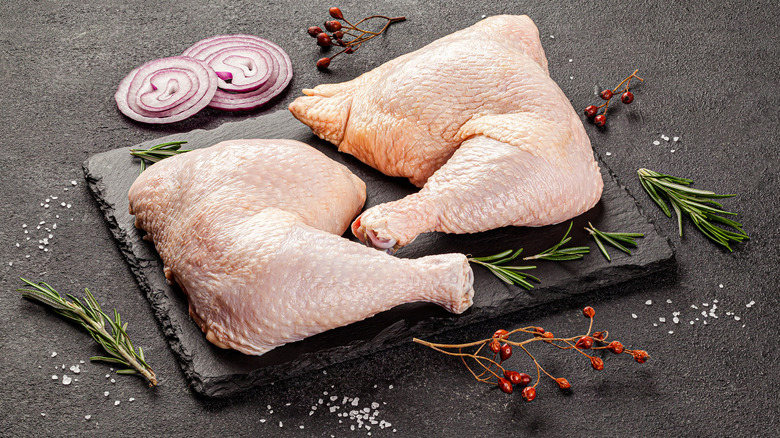The Cut Of Chicken To Avoid When Making Coq Au Vin
Despite its fancy name, coq au vin or "rooster with wine" is quite easy to make. This classic French dish is always a sight to behold, showcasing tender chicken (from a hen or rooster) bathing in a rich wine sauce bursting with flavor. Better still, most recipes can be whipped up in less than an hour, whether preparing a traditional recipe or something with a modern twist. But the key to pulling off a successful coq au vin lies in sourcing quality ingredients, specifically, the meat. When beginning a pot, pay careful attention to what cut of the chicken you're using as well as its age. Avoid lean chicken breast, as it tends to dry out during cooking, and instead, opt for chicken thighs or bone-in legs.
For an extra touch of authenticity, seek out cuts from an aged rooster — the kind that forms the base of traditional coq au vin. Cuts from old roosters are firmer than those from the younger broiler chickens you would find at stores. And that firmness allows the meat to take better to the braising process, enhancing its tenderness for a wonderful texture.
What's the difference between meat from an old rooster and store-bought broiler chicken?
These mature birds, having spent their days foraging, offer meat with a firmer texture that perfectly complements the braising process in the wine sauce. This is where coq au vin's legendary tenderness comes from. There's a huge difference between the meat of an aged rooster and the younger, 6 to 8-week-old broiler chicken commonly found in markets. That's why most recipes advise against using store-bought chicken for making coq au vin. Consider reaching out to local farms to ask if they have the meat of older roosters available for sale.
However, we understand that isn't always possible, and that's where the roaster chicken steps in as an alternative. These chickens, aged between 3 to 5 months and weighing 5 to 7 pounds, offer a close approximation to the traditional flavor and consistency. While they may not match the excellence of mature rooster meat, if you execute the recipe well enough, you'll still have a delightful coq au vin platter to proudly present to your guests by the end!

